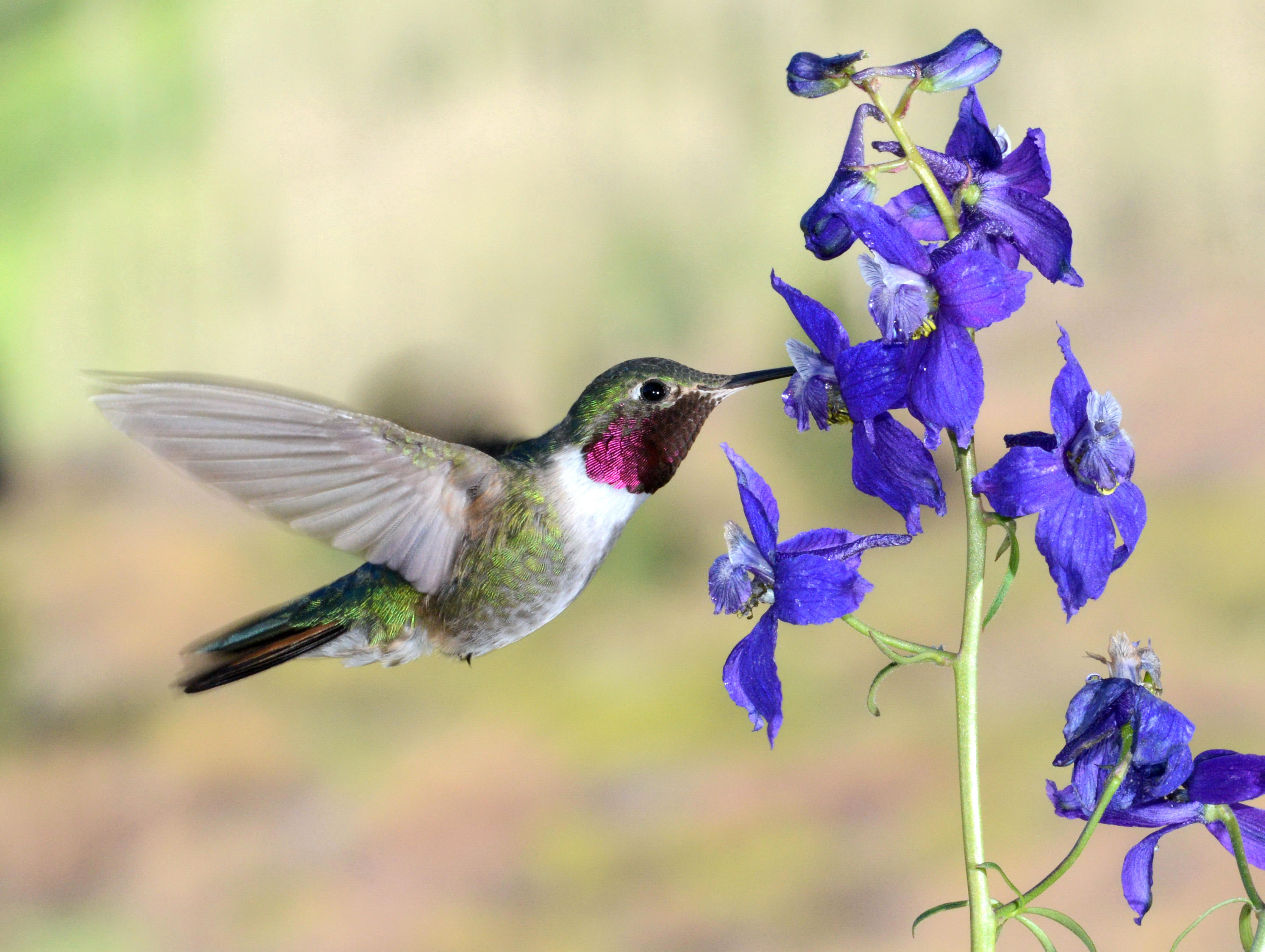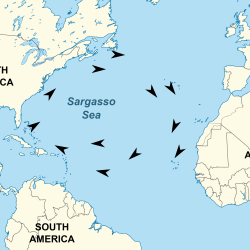Hummingbirds See Colors Humans Can Only Imagine
New research shows hummingbirds distinguish colors that combine ultraviolet and visible light
While humans have three color cones in the retina sensitive to red, green and blue light, birds have a fourth color cone that can detect ultraviolet light. New research shows that hummingbirds can see combination colors that include ultraviolet, like ultraviolet+green and ultraviolet+red. Similar to purple, which combines two colors (red and blue) that are not close to each other on the color spectrum, these ultraviolet combinations may form new colors that humans can only imagine.
In a new study, a team of researchers that included University of Maryland biologist David Inouye, trained wild hummingbirds to find a sugar treat by identifying ultraviolet combination colors. The birds could even distinguish between different shades of these combinations. The study was published on June 15, 2020, in the Proceedings of the National Academy of Sciences.
“The colors that we see in the fields of wildflowers at our study site—the wildflower capital of Colorado—are stunning to us, but just imagine what those flowers look like to birds with that extra sensory dimension,” said Inouye, a professor emeritus of biology at UMD with an appointment at the Rocky Mountain Biological Laboratory (RMBL) in Gothic, Colorado, and a co-author of the research paper.
To find food, dazzle mates, escape predators and navigate diverse terrain, birds rely on their excellent color vision. To investigate how birds perceive their colorful world, the researchers established a new field system for exploring bird color vision in a natural setting at RMBL. They trained wild broad-tailed hummingbirds (Selasphorus platycercus) to participate in color vision experiments.
“Most detailed perceptual experiments on birds are performed in the lab, but we risk missing the bigger picture of how birds really use color vision in their daily lives,” said Mary Caswell Stoddard, an assistant professor in the Princeton University Department of Ecology and Evolutionary Biology and lead author of the study. “Hummingbirds are perfect for studying color vision in the wild. These sugar fiends have evolved to respond to flower colors that advertise a nectar reward, so they can learn color associations rapidly and with little training.”
The research team, which also included scientists from the University of British Columbia and Harvard University, was particularly interested in “nonspectral” color combinations. These combinations involve hues from widely separated parts of the color spectrum, as opposed to blends of neighboring colors like teal (blue-green) or yellow (green-red). Purple is the clearest example of a nonspectral color. Technically, purple is not in the rainbow: it arises when the short-wave sensitive “blue” cones and long-wave sensitive “red” cones in our retinas are stimulated, but the medium-wave “green” cones are not.
While purple is the only nonspectral color humans perceive, birds can theoretically see up to five: purple, ultraviolet+red, ultraviolet+green, ultraviolet+yellow and ultraviolet+purple. To determine whether birds could actually perceive these colors, the team conducted a series of experiments using custom-made “bird vision” LED tubes programmed to display a broad range of colors, including nonspectral colors like ultraviolet+green.
Each morning, the researchers rose before dawn and set up two feeders in an alpine meadow frequently visited by local broad-tailed hummingbirds: one containing sugar water and the other plain water. Beside each feeder, they placed an LED tube. Each LED tube emitted a different color. The researchers periodically swapped the positions of the rewarding and unrewarding tubes, so the birds could not simply use location to pinpoint the sugar water. They also performed control experiments to ensure that the tiny birds were not using smell or another inadvertent cue to find the reward. Over the course of several hours, wild hummingbirds learned to visit the rewarding color. Using this setup, the researchers recorded over 6,000 feeder visits in a series of 19 experiments over three summers.
The experiments revealed that hummingbirds can see a variety of nonspectral colors, including purple, ultraviolet+green, ultraviolet+red and ultraviolet+yellow. For example, hummingbirds readily distinguished ultraviolet+green from both pure ultraviolet and pure green, and they discriminated between two different mixtures of ultraviolet+red light—one redder than the other.
“It was amazing to watch,” said Harold Eyster, a UBC Ph.D. student and a co-author of the study. “The ultraviolet+green light and green light looked identical to us, but the hummingbirds kept correctly choosing the ultraviolet+green light associated with sugar water. Our experiments enabled us to get a sneak peek into what the world looks like to a hummingbird.”
Even though hummingbirds can perceive nonspectral colors, appreciating how these colors appear to birds can be difficult. “It is impossible to really know how the birds perceive these colors. Is ultraviolet+red a mix of those colors, or an entirely new color? We can only speculate,” said Ben Hogan, a postdoctoral research associate at Princeton and a co-author of the study.
Finally, the research team analyzed a data set of 3,315 feather and plant colors. They discovered that birds likely perceive many of these colors as nonspectral, while humans do not. That said, the researchers emphasize that nonspectral colors are probably not particularly special relative to other colors. The wide variety of nonspectral colors available to birds is the result of their ancient four-color cone visual system.
"This research opens up new avenues for future experiments with wild hummingbirds; gives us a new appreciation of their interactions with wildflowers, each other and other bird species; and sets the stage for similar work on other animals with four-color visual systems," Inouye said.
###
This story was adapted from text provided by Princeton University.
The paper, “Wild hummingbirds discriminate nonspectral colors,” Mary Caswell Stoddard, Harold N. Eyster, Benedict G. Hogan, Dylan H. Morris, Edward R. Soucy and David W. Inouye, was published on June 15, 2020, in the Proceedings of the National Academy of Sciences.
Media Relations Contact: Abby Robinson, 301-405-5845, abbyr@umd.edu
University of Maryland
College of Computer, Mathematical, and Natural Sciences
2300 Symons Hall
College Park, Md. 20742
www.cmns.umd.edu
@UMDscience
About the College of Computer, Mathematical, and Natural Sciences
The College of Computer, Mathematical, and Natural Sciences at the University of Maryland educates more than 9,000 future scientific leaders in its undergraduate and graduate programs each year. The college's 10 departments and more than a dozen interdisciplinary research centers foster scientific discovery with annual sponsored research funding exceeding $200 million.








